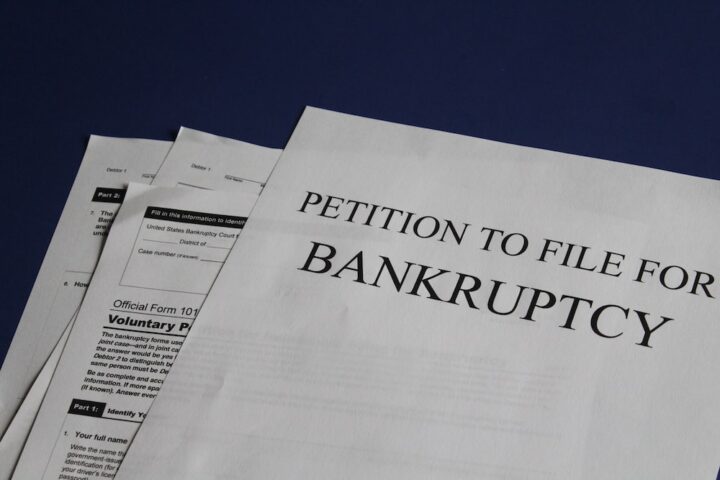Bankruptcy Myths Debunked: What You Need to Know Before Filing
Are you drowning in debt and considering bankruptcy as your lifeline? It’s a significant decision that can have a lasting impact on your financial future. Before you take the plunge, let’s debunk some common bankruptcy myths to help you make an informed choice.

Myth 1: Bankruptcy Means You’ve Failed Financially
One of the most pervasive myths about bankruptcy is that it’s a mark of financial failure. In reality, bankruptcy is a legal tool designed to provide a fresh start for individuals or businesses overwhelmed by debt. It’s not a personal failure; it’s a chance to regain control of your financial life. Work with a trusted bankruptcy attorney in Phoenix and they will help you determine the best financial route for you.
Myth 2: Bankruptcy Will Ruin Your Credit Forever
While bankruptcy does affect your credit score, it’s not a life sentence for bad credit. Bankruptcy stays on your credit report for a specified period, usually seven to ten years, but it doesn’t mean you can’t rebuild your credit during that time. With responsible financial habits, you can improve your credit score over time.
Myth 3: You’ll Lose Everything in Bankruptcy
Another common misconception is that you’ll lose all your assets if you file for bankruptcy. In reality, bankruptcy laws provide exemptions that protect certain assets, such as your primary residence, a car, and essential personal belongings. The specifics vary by state, so it’s essential to consult with a bankruptcy attorney to understand how your assets will be affected.
Myth 4: Bankruptcy Clears All Debts
Bankruptcy is a powerful tool, but it doesn’t wipe the slate completely clean. Some debts, like student loans, child support, and certain taxes, typically cannot be discharged through bankruptcy. It’s crucial to understand which debts are eligible for discharge in your specific situation.
Myth 5: You Can Choose Which Debts to Include
You can’t cherry-pick which debts to include in your bankruptcy filing. The law requires you to list all your debts, and they will be categorized as either secured or unsecured. Secured debts, like mortgages or car loans, are linked to collateral, while unsecured debts, such as credit card debt, are not tied to specific assets.
Myth 6: Bankruptcy Is a Quick Fix
Bankruptcy isn’t a quick fix for financial troubles. It’s a legal process that can take several months to complete. During this time, you’ll need to work closely with your bankruptcy attorney, attend meetings, and adhere to the court’s requirements. It’s not an instant solution but a well-structured path towards financial recovery.
Myth 7: Everyone Will Know You Filed for Bankruptcy
While bankruptcy filings are public records, it’s unlikely that everyone you know will find out about your bankruptcy. Unless you’re a public figure or your financial situation becomes a news story, your bankruptcy is not something that will be widely broadcast.
Myth 8: You Can’t Get Credit After Bankruptcy
While it may be more challenging to obtain credit immediately after bankruptcy, it’s not impossible. Some lenders specialize in working with individuals who have filed for bankruptcy and may offer you credit with higher interest rates or lower limits. Over time, as you rebuild your credit, more favorable credit options will become available.
Myth 9: Bankruptcy Is the Only Option
Bankruptcy should be considered a last resort after exploring other debt relief options, such as debt consolidation, negotiation, or credit counseling. It’s essential to consult with a financial advisor or bankruptcy attorney to assess your situation thoroughly and determine the best course of action.
Myth 10: Bankruptcy Is Easy to File Without Professional Help
While it’s technically possible to file for bankruptcy without an attorney, it’s not recommended. Bankruptcy laws are complex and subject to change. A bankruptcy attorney has the experience and knowledge to guide you through the process, ensuring you meet all legal requirements and maximize your debt relief opportunities.
In Conclusion
Bankruptcy is not a one-size-fits-all solution, and it’s crucial to separate fact from fiction when considering this option. Remember that bankruptcy is a legal tool designed to help you regain control of your financial life, not a symbol of failure. It’s essential to consult with a qualified attorney and explore all your options before making a decision. While bankruptcy may not be the right choice for everyone, it can provide a fresh start for those facing overwhelming debt.
In the end, the most important thing is to take control of your financial future, whether through bankruptcy or alternative means, and work towards a more stable and debt-free life.


